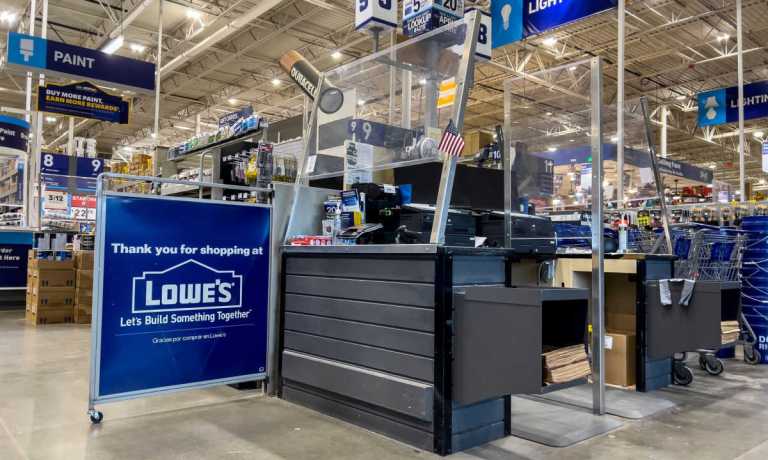
The nation’s second-largest chain of hardware stores said Wednesday (Nov. 16) that its commercial or “Pro” business grew 19% last quarter, as consumers continue to invest in home remodeling projects rather than face the turbulence and high mortgage rates that are currently crimping housing sales.
In announcing its third-quarter earnings results, the CEO of the North Carolina-based operator of nearly 2,000 stores said that contrary to common misperception about the home improvement business, Lowe’s current and long-term prospects remain strong.
“Even in the U.S. market where home prices have declined after a particularly steep run-up during the pandemic, we are not seeing any impact to sales,” Lowe’s CEO Marvin Ellison told analysts, noting continued strength in the three biggest factors that impact the category’s demand, specifically elevated home prices, age of housing stock and disposable personal income.
While economic gloom and fears about inflation crimping household spending and sentiment have roiled retailers and markets all year, Ellison said it was important to “not confuse” the difference in demand drivers for home improvement versus home building.
“This unique combination of factors is causing homeowners to trade-up in place, preferring to invest in repairs and renovations to make their current homes meet their family’s evolving needs, rather than buying a new home,” said Ellison, who’s led Lowe’s for five years and whose 35-year retail industry resume also includes stints at JCPenney, Home Depot and Target.
“This is why we’re so confident about the outlook for the home improvement industry even in a period of high inflation and rising interest rates because the key drivers of our business remain supportive,” he added.
A Pocket of Strength
Ellison’s insights come in the wake of similar remarks made by larger rival Home Depot, which reported its own set of defiant results Tuesday driven by the strength of its Pro sales.
In detailing the company’s bullishness that underpins its projected uptrend in home improvement, Ellison noted that despite a broad base decline in home prices this year, the average homeowner still has a record $300,000 in home equity to support investments, as well as the fact that the average home is now over 40 years old and that millions of other houses built in the mid-2000s are now entering peak remodeling years.
“Two-thirds of Home Improvement spend is non-discretionary on repair or maintenance projects that cannot be delayed,” he noted.
In addition, he said, more than 90% of homeowners either own their home outright or are locked into a low, fixed mortgage that insulates them from rising rates.
Add in what Ellison said was “a persistent 1.5 to 2 million under supply of homes,” as well as an estimated 250,000 first-time millennial homebuyers entering the housing market annually, and the case for resilience and optimism becomes clear.
Calling All Pros
Given this backdrop and the 6x outperformance of Lowe’s Pro business last quarter, it is understandable what it and Home Depot are both aggressively pursuing and positioning themselves to capture this upcoming wave of big-ticket purchases.
In the case of Lowe’s, the retailer is continuing its efforts to hire more installation service providers while also increasing the benefits and rewards it gives to professional customers via its MVP program.
“Over 70% [of Pros] said that they expect even more work in 2023 than they had in 2022. This is just another proof point of the resilience of Home Improvement demand, even in this uncertain macro environment,” Ellison said on the earnings call.
For all PYMNTS retail coverage, subscribe to the daily Retail Newsletter.